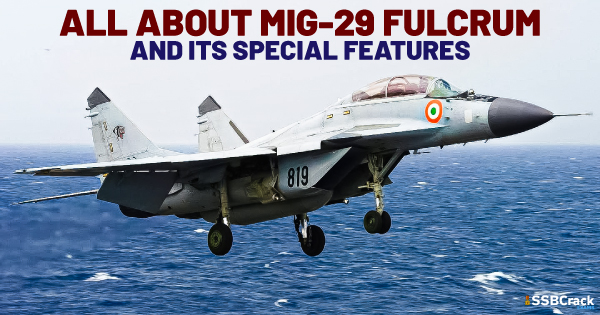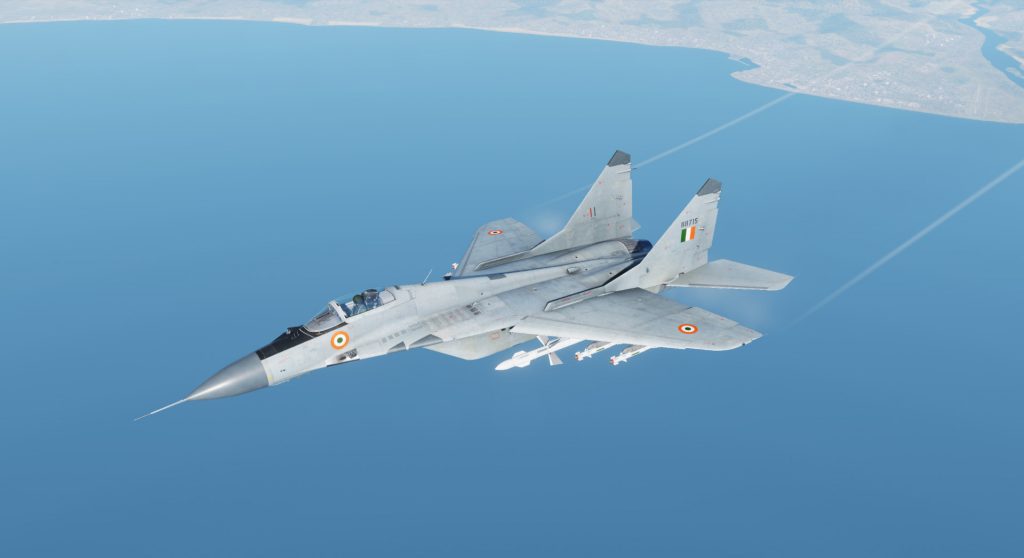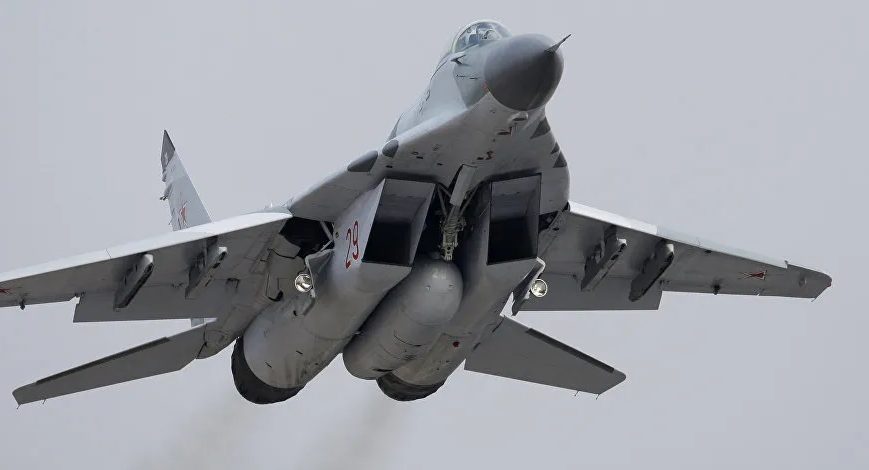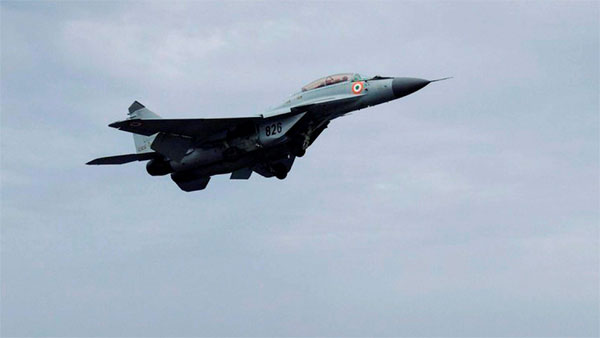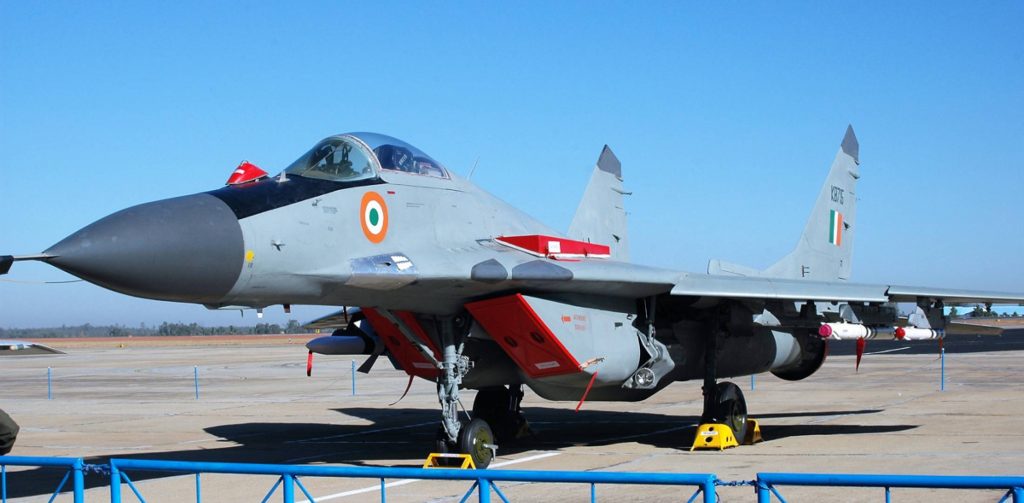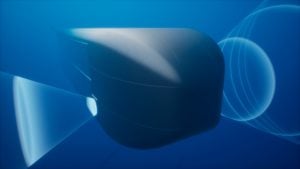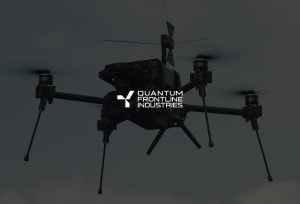The Mig-29 is a twin-engine fighter aircraft created in the Soviet Union (NATO reporting name: Fulcrum). The MiG-29 and the bigger Sukhoi Su-27 were developed as air dominance fighters by the Mikoyan design bureau in the 1970s to compete with emerging American fighters like the McDonnell Douglas F-15 Eagle and the General Dynamics F-16 Fighting Falcon. In 1982, the MiG-29 was first used by the Soviet Air Forces.
The MiG-29’s task is to eliminate hostile air targets within the range of radar coverage and to eliminate ground targets when flying visually. Large wing leading-edge root extensions and the fixed-wing profile of the aircraft allow for good subsonic manoeuvrability and control, including manoeuvres at high angles of attack. The operable maximum g-loading is 9g.
About MiG-29
The MiG-29M2, a two-seater variant, made its first flight in 2001. At the Farnborough International Airshow in July 2006, a super-maneuvrable MiG-29M OVT with 3D thrust-vectoring engine nozzles was successfully displayed. To deflect the thrust, the nozzle features three hydraulic actuators located around the engine. Potential buyers are presented with the aircraft under the name MiG-35.
Variants of MiG-29
While many MiG-29s are equipped as multirole fighters capable of executing a number of various operations and are frequently equipped to utilise a range of air-to-surface weaponry and precise missiles, they were initially designed for combat against any adversary aircraft. The Mikoyan MiG-35 is the most advanced member of the family to date. The MiG-29 has been produced in a number of significant variants, including the multirole Mikoyan MiG-29M and the navalized Mikoyan MiG-29K. Later versions usually come with upgraded engines, glass cockpits with HOTAS-compatible flight controls, contemporary radar and infrared search and track (IRST) sensors, significantly more fuel capacity, and in some cases, aerial refuelling capability.
Its strongest point is short-range combat.
The German Air Forces acquired a full squadron of MiG-29 Fulcrum aircraft upon the reunification of Germany. Western military advisors examined the MiG’s flying characteristics and were astonished by its performance. No fighter from the west could compete with the MiG on a comparable level. Only thirty years later, new aircraft like the Lockheed Martin F-22 Raptor or the Eurofighter EF2000 Typhoon was able to match the flight characteristics. The flat fuselage of the MiG-29 accounts for about 40% of the lift. Due to this, the MiG is impossible to defeat in dogfights, especially at low speeds. The MiG-29 Fulcrum OWT’s 3D thrust vectoring technology has allowed for the aircraft to perform seemingly impossible manoeuvres that aim to confuse adversary pilots.
All Soviet-built aircraft were frequently referred to together as “MiG Aircraft.” As a result, sometimes you’ll hear people refer to aeroplanes made by other companies as “MiGs,” like Sukhoi.
Specifications of MiG-29 “FULCRUM“
A contemporary supersonic fighter of the fourth generation, the MiG-29 Fulcrum is capable of exceeding twice the speed of sound. The plane is comparable to the General Dynamics F-16 Fighting Falcon or the American Boeing F/A-18 Hornet.
- Size: 17.32 metres
- Span: 11.36 m
- Fuel carrying capacity: 3150 kg Climbing speed: 330 m/s
- 16800 kg is the standard takeoff mass.
- Maximum speed: 2.390 km/h (Mach 2.25)
- superior qualities for dogfighting
Radar
The MiG 29UPG has a tracking range of up to 120km thanks to its N010M Zhuk ME Radar. It can simultaneously target 10 aerial threats and engage 4 of them. The MiG 29 is regarded as an interceptor because of its limited range and ability to quickly stop approaching enemy jets.
Range
The MiG 29’s standard ferry range was 1,800 km, but when the upgrade included conformal fuel tanks (CFT), the range was increased to 2,100 km. Additionally, it has a mid-air refuelling capability to increase its operational range.
Payload
With six underwing hardpoints that can be fitted with different configurations, such as air-to-ground, etc., the MiG 29 can carry a payload of up to 4,000 kg.
Manoeuvrability
When compared to western jets, analysts claim that the MiG 29s are likewise exceptionally agile. Even the agile F-16 can’t match its performance in quick and prolonged manoeuvres. In short-range dogfights at low speeds, NATO pilots who trained against German Air Force Fulcrums discovered that the MiG-29 was more nimble than anything they could throw at it.
MiG in India
Currently, the IAF is using around 67 Mig-29 and the Indian Navy is using approximately 44 MiG 29K.
Four MiG-21 squadrons, five Jaguar squadrons, three MiG-29 (UPG) squadrons, three Mirage 2000 (UPG) squadrons, twelve Su-30MKI squadrons, two LCA squadrons, and two Rafale squadrons are currently in service with the IAF. The Indian Air Force’s MiG-29UPG fighters rank among its most reliable fighter aircraft. In 2021, they were sent to Ladakh to act as a deterrent against an assertive neighbour.
To crack the SSB Interview, You can join our SSB interview live classes batch and we recommend you to Enroll SSB INTERVIEW ONLINE COURSE. Trusted by thousands of defence aspirants.
Also read:
